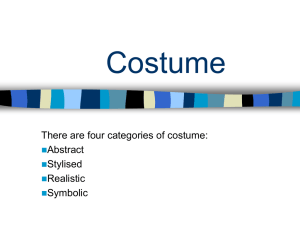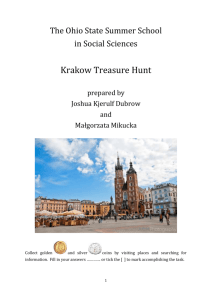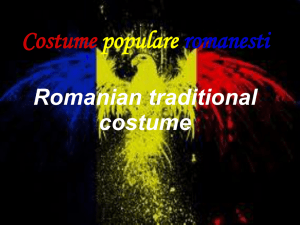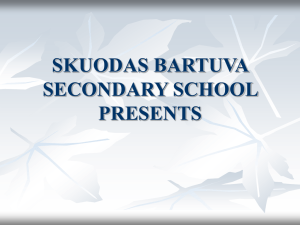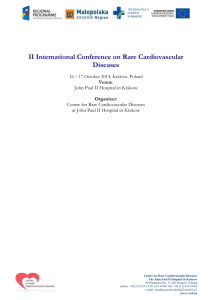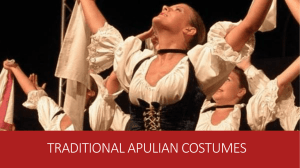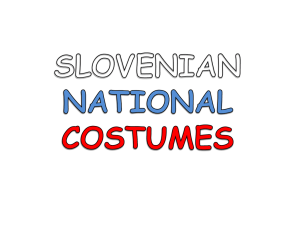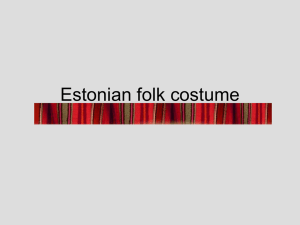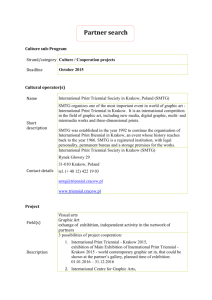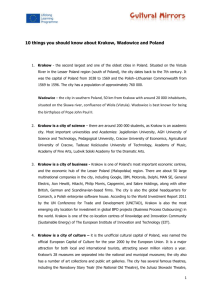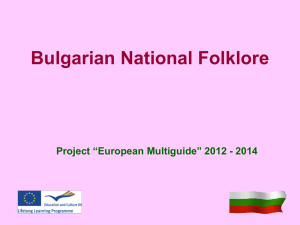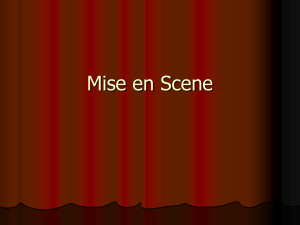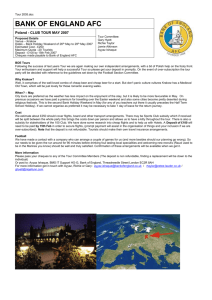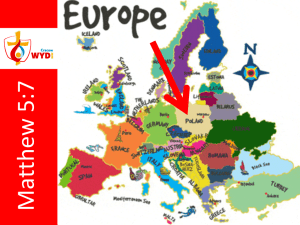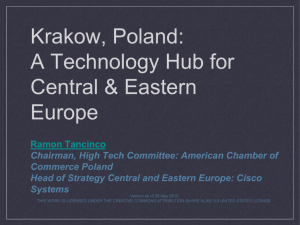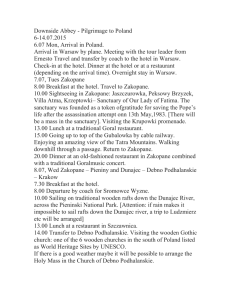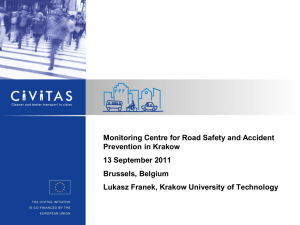Polish folk costumes from the Krakow region - comenius
advertisement
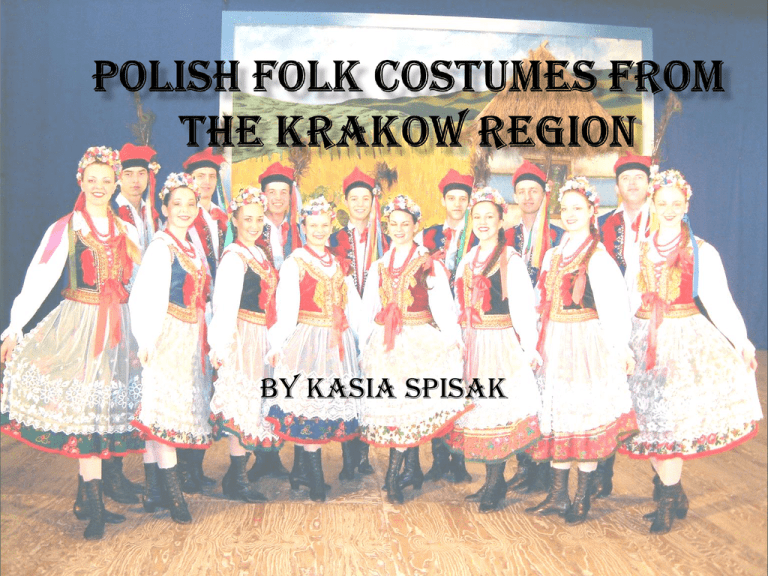
by Kasia Spisak Poland remains one of the few European countries in which with the onset of the 21st century one can still encounter some „living manifestations” of folk culture. The costumes are exceptional, worn only on special family and national occasions, during religious holidays, church services, plenary indulgences, weddings and harvest festivals. They have never been worn on everyday basis for work in the field or around the household. Folk costumes have always been perceived as a festive garment, worn with dignity. In the pictures little girls, who are wearing Krakow folk costumes, are throwing a shower of flower petals during a Corpus Christi procession. A Krakow costume is the only peasants' attire which was promoted to the rank of a Polish national costume. The Krakow festive costumes are considered to be the bestknown of Polish folk costumes. Their fabrics, cut, colour, and adornments, changed repeatedly, reaching the greatest differentiation in the final stage of development at the beginning of the 20th century. As a result of historical events, and the influence of patriotic as well as artistic ideas, the Krakow costumes also acquired a symbolical meaning. This is especially true of the man's white overcoat and a red square cap, decorated with peacock feathers. These two elements came to symbolize the Poles and Poland, raising the Krakow regional costume to the status of a national costume. The men's costumes are of particular interest with peacock feathers in their hats and strings of metal rings at the belts; a historic reference to an ancient warrior's outfit. This man is wearing: a waistcoat and "krakuska" the particular sort of a red four cornered hat topped with peacock feathers. This man's folk costume is decorated with various trims and embroidery. His long coat is paired with high leather boots. A woman is wearing: a white blouse, lace-up boots and a flowered full skirt. The heavily embroidered vest is tied with ribbons. The back of the vest is also embroidered. She’s also wearing an open-work embroidered shirt, and necklace of coral beads. Krakow is well known not only as the site of the old royal capital of Poland, but also as a vibrant center of rich folklore, historic traditions, and arts. Elements of this appear in krakowiak with the dancers arriving in socalled Krakow's cart. As horses are loved in this region, there is always a familiar galloping step prevalent in the dances. Poles were subject to fierce persecution by the Tartars for over half a century - an event which left a deep impression. A symbol of these fierce people was the Lajkonik - a Tartar riding a horse - and he came to play an important role in the Krakowiak, the dance of the people of Krakow. The Lajkonik is a white horse, crowned with a plume of feathers and dressed in an elaborate red or gold cape covered in brocade. The man who rides him has a coat of similar material tied in front with a red sash and yellow trousers. His conical hat is peaked with a crescent and he twirls a mace in his hand. Bibliography: http://www.polishsite.us/ http://ethnomuseum.website.p http://polskiinternet.com/english
